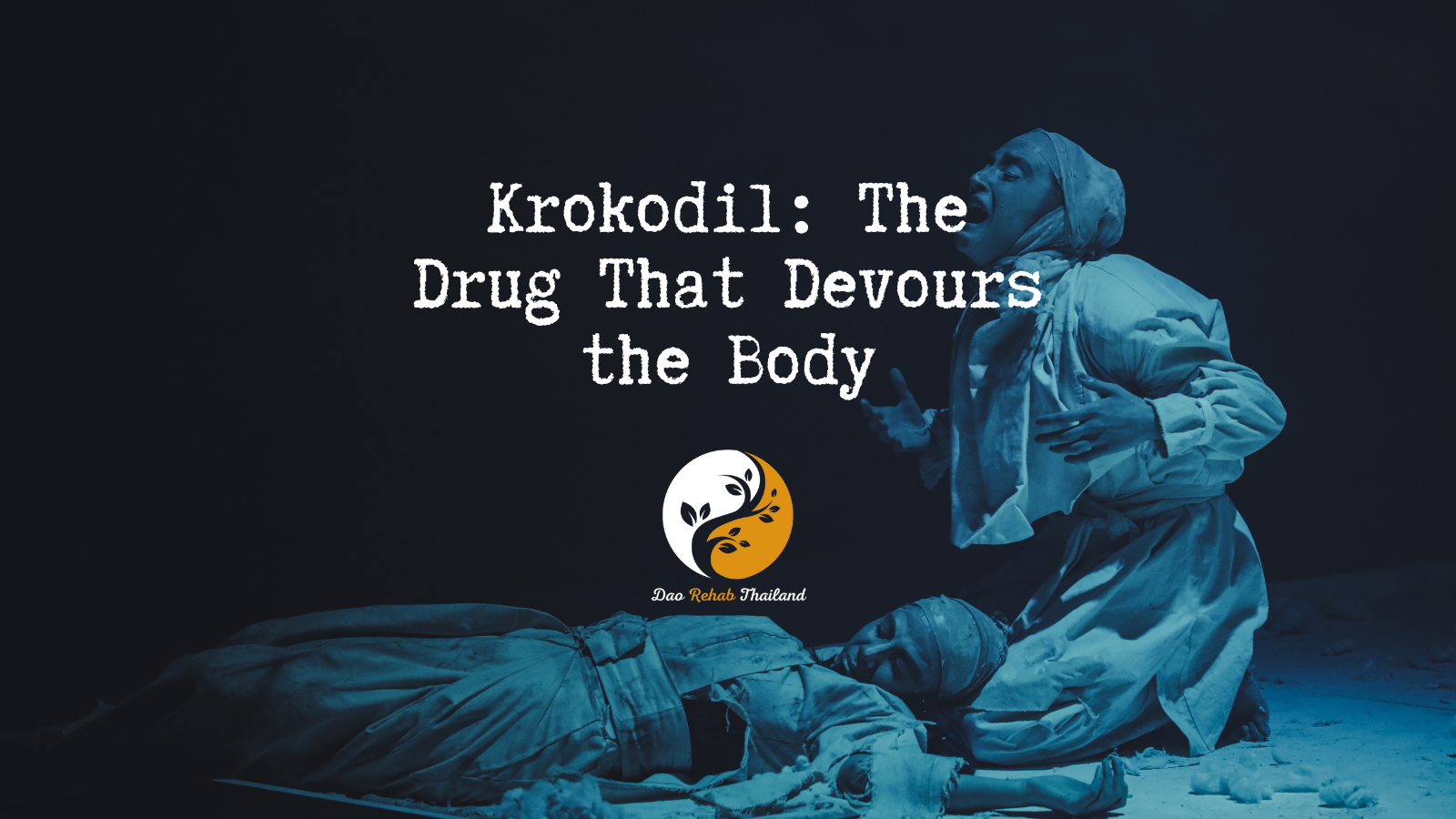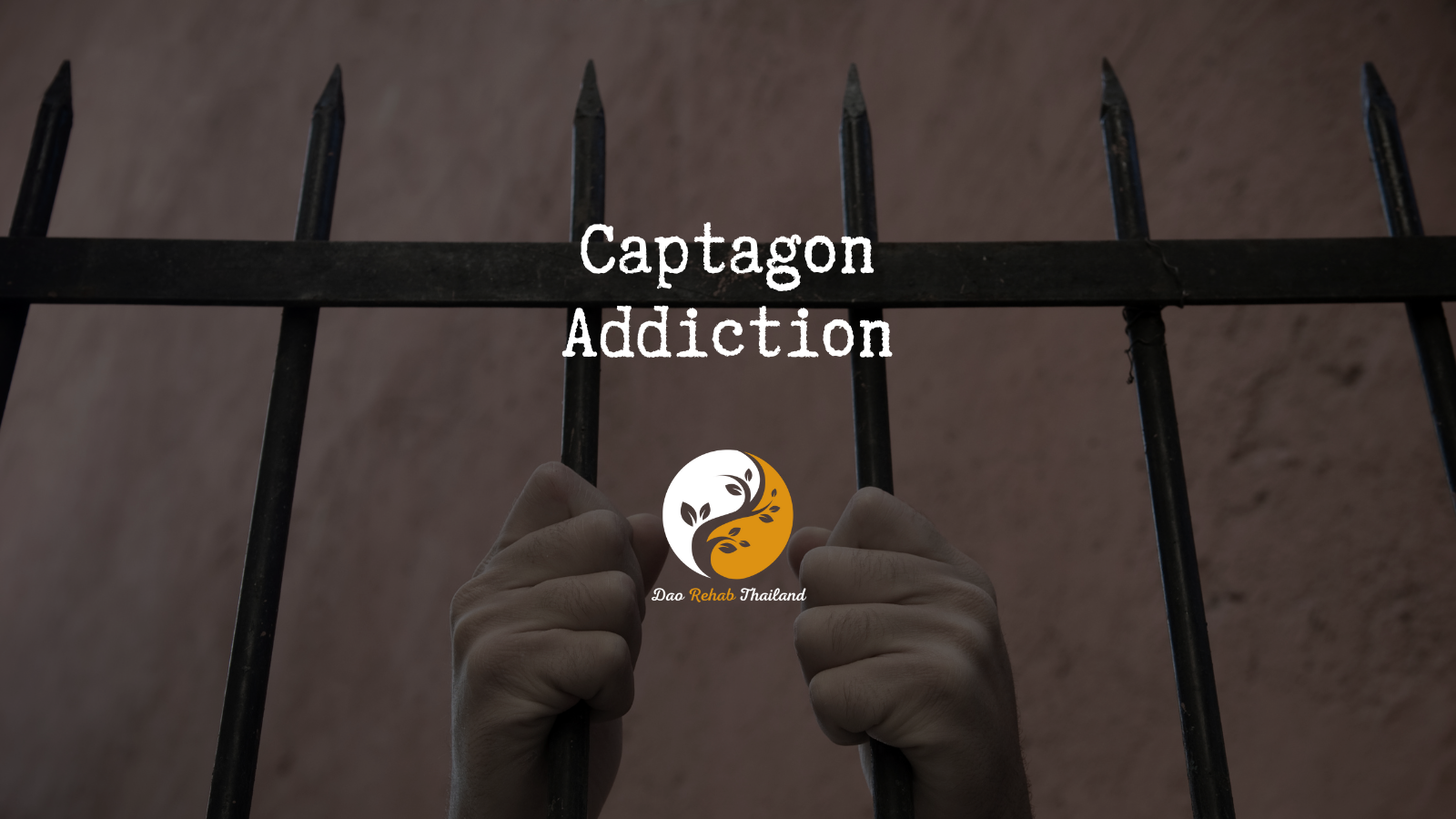
Krokodil: The Drug That Devours the Body
Krokodil: The Drug That
Devours the Body
“Turning the impossible into possible”

"Detox from Krokodil at a Luxury Holistic Center in Thailand and Israel"

Detox from Krokodil
Krokodil is a street drug known for its deadly effects, containing the active ingredient desomorphine. It is a synthetic opioid that is more potent than morphine but far more dangerous due to how it is produced and consumed.
Origin of the Name “Krokodil”: The name “Krokodil” (crocodile in Russian) comes from the drug’s effects on the body: users often develop extensive skin lesions that resemble the scales of a crocodile. These wounds occur due to the toxic substances in the drug, which cause severe tissue damage.
How the Drug is Made: The drug is often produced in home laboratories by mixing desomorphine with toxic chemicals such as gasoline, hydrochloric acid, phosphorus from matches, and machine oil. The unregulated production and non-sterile conditions result in many contaminants in the drug.
"Holistic Center for Trauma, Addiction, and Mental Imbalance Treatment in Thailand"
“Come to the beginning of your journey to freedom from addiction to alcohol, drugs, and pills, and rediscover your life within the serene embrace of DaoTherapy Rehab in Thailand—where holistic healing meets empowering recovery.”
DaoTherapy Holistic Rehab
Key Elements of Krokodil Detox:
Medical Supervision: Krokodil detox must be conducted under medical supervision, as the body may experience withdrawal symptoms. These can include nausea, anxiety, muscle aches, and insomnia. A medical team will monitor and manage these symptoms to ensure the patient’s safety and comfort.
Holistic Therapies:
Holistic Therapies: Many detox programs incorporate holistic therapies such as mindfulness, yoga, and meditation to help individuals cope with stress and anxiety during the detox process. These therapies support the mind-body connection and contribute to overall recovery.
Tapering Process
Tapering Process: Krokodil detox often involves a gradual tapering of the drug to reduce withdrawal severity. Doctors will slowly decrease the dosage over time to allow the body to adjust to lower levels of the substance.
Psychological Support:
Psychological Support: Like any addiction recovery process, detox from Krokodil includes psychological support. This can involve counseling, therapy, or support groups to address the mental and emotional aspects of addiction.
Post-Detox Treatment:
Post-Detox Treatment: After completing detox, continuing treatment is crucial to prevent relapse. This often includes participation in ongoing therapy, group support, and the development of new coping strategies to maintain sobriety.
Effects and Side Effects:
Effects and Side Effects:
- Short-Term Effects: The drug provides a strong but short-lived euphoria similar to heroin, although the duration is much shorter.
- Severe Physical Damage: The drug causes tissue necrosis and damage that can lead to skin dissolution and severe, slow-healing wounds.
- Internal Organ Damage: Prolonged use can lead to severe damage to the liver, kidneys, and brain.
- Diseases and Infections: Users are at high risk for severe bacterial infections, which can lead to sepsis and death.
Risk of Addiction: Krokodil use carries an extremely high risk of addiction due to its opioid nature and powerful effects. Addiction develops quickly, leading to severe physical and psychological consequences.
Life Expectancy: The life expectancy of Krokodil users is very low. Regular users can die within two to three years from the start of use due to severe physical damage and other harmful effects.
Summary: Krokodil is one of the most dangerous drugs on the market, and the damage it causes to the body is almost unimaginable. Its use results in devastating physical and psychological consequences, often leading to rapid death. Raising awareness of the drug’s dangers and supporting prevention and treatment efforts for addicts is crucial.

contact us
Contact us with your questions
We would love to speak with you! Feel free to reach out with any questions.

get in touch
Schedule a free consultation
Schedule a free consultation with our team and let’s make things happen!
Historical Background of Krokodil and Its Prevalence:
Origin and Development:
The drug Krokodil, whose chemical name is desomorphine, was first developed in the 1930s in Switzerland as a painkiller stronger than morphine but with fewer side effects. Desomorphine was patented and used primarily in medicine for pain relief, but over time, it was replaced by other substances due to the dangerous side effects it produced.
Spread and Prevalence:
Krokodil became particularly prevalent in Russia and former Soviet states in the early 2000s. The drug’s spread was largely due to its low cost and the easy availability of the materials used to produce it, which attracted low-income individuals who had previously used heroin or other opioids. The home production of the drug led to an uncontrolled chemical process, making it especially dangerous.
How It Became Popular:
Due to restrictions and the prohibition of heroin in certain countries, as well as the rising prices of other opioids, Krokodil became a cheap and accessible alternative. Its chemical ingredients include everyday products such as gasoline, phosphorus, and hydrochloric acid, which are easy to obtain, contributing to its growing popularity.
Regions Where It Is Prevalent:
Krokodil use is particularly widespread in Russia and Eastern European countries, including Ukraine, Belarus, and Kazakhstan. In recent years, there have been reported cases in Western countries such as Germany and the United States, though these are less common due to stricter regulation and higher awareness of the drug’s dangers.
Social and Health Consequences:
The spread of Krokodil in these regions has caused severe social and health problems. The drug, which severely destroys tissues and causes necrosis and serious wounds, has become a major factor in deadly addiction and high mortality rates in certain areas.
Krokodil began as a medicinal drug in Switzerland but has since turned into a deadly street drug, primarily prevalent in Russia and neighboring countries. The home-based production and toxic ingredients have made it one of the most harmful drugs, with severe consequences for its users and society as a whole.
Medical Dangers and Side Effects of Krokodil:
1. Severe Tissue Damage:
The use of Krokodil causes severe damage to body tissues. The toxic chemicals in the drug, such as gasoline and acids, lead to skin dissolution and severe wounds that are difficult to heal. In extreme cases, the drug causes necrosis, which can lead to the amputation of limbs.
2. Bacterial Infections:
The open wounds caused by Krokodil use expose users to severe bacterial infections. These infections can lead to sepsis, a life-threatening condition where the infection spreads throughout the body.
3. Damage to Internal Organs:
Repeated use of Krokodil results in serious damage to internal organs such as the liver, kidneys, and brain. The damage to various bodily systems can lead to organ failure and death.
4. Immune System Suppression:
The chemicals in the drug can suppress the immune system, making users more susceptible to diseases and infections.
5. Severe Addiction:
Krokodil is an opioid drug, making it highly addictive. Addiction develops rapidly, and withdrawal is often extremely difficult due to the severe physical and psychological effects of the drug.
6. Mental Side Effects:
Krokodil use can lead to mood swings, anxiety, depression, and hallucinations. These effects increase the risk of additional mental health issues and complicate the withdrawal process.
7. Low Life Expectancy:
Due to the extensive physical and mental damage caused by the drug, the life expectancy of Krokodil users is especially short. Many users die within a few years of starting use.
Krokodil is one of the most dangerous drugs, causing severe harm to both body and mind. The damage includes tissue destruction, infections, organ damage, and severe addiction. Awareness of its dangers and efforts to combat its use are crucial for preventing further harm and supporting addicts in the recovery and rehabilitation process.
it is possible to recover from Krokodil addiction,
Yes, it is possible to recover from Krokodil addiction, but the process is particularly complex and requires intensive medical and psychological support. Due to the severe damage Krokodil causes to the body and mind, withdrawal is one of the most difficult among opioid drugs. Here’s what you need to know about recovering from Krokodil:
1. Severe Withdrawal Symptoms:
The withdrawal process from Krokodil involves extremely severe symptoms, including intense physical pain, muscle cramps, sweating, nausea, vomiting, anxiety, and depression. These symptoms can last longer than heroin withdrawal due to the additional toxic chemicals in the drug.
2. Medical Treatment and Close Supervision:
Detox requires hospitalization or treatment in a professional medical facility, where medications can be provided to alleviate physical symptoms and prevent health complications. This treatment includes pain management, hydration, and nutritional support.
3. Psychological Therapy and Emotional Support:
Recovery from Krokodil must include a significant psychological component. Users often face emotional trauma, deep depression, and other psychological difficulties. Cognitive-behavioral therapy (CBT), counseling, and group support can help address the mental challenges of the withdrawal process.
4. Rehabilitation and Lifestyle Improvement:
Beyond physical withdrawal, rehabilitation involves building a healthy lifestyle and restoring social and familial relationships. It is important to work on developing social support and learning stress management tools and ways to handle complex situations without resorting to drugs.
5. Commitment and Persistence:
The process of withdrawing from Krokodil is long and challenging, requiring great commitment and persistence from the patient. The process can include ups and downs, so continuous professional and environmental support is essential.
Despite the difficulty, it is possible to recover from Krokodil addiction with persistence, professional medical care, and emotional and psychological support. The recovery process takes time and patience, but ultimately, it allows addicts to rebuild their lives and return to a healthy, balanced path.
Psychological Support:
Psychological Support: Like any addiction recovery process, detox from Subutex includes psychological support. This can involve counseling, therapy, or support groups to address the mental and emotional aspects of addiction.
Withdrawal Symptoms from Krokodil:
The withdrawal process from Krokodil is particularly challenging due to the harmful nature of the drug and its toxic effects on the body. The symptoms include a wide range of physical and psychological effects and can often be more severe than those observed with withdrawal from other opioids.
1. Physical Symptoms:
– Severe Pain: Intense pain in the muscles and joints is one of the most prominent withdrawal symptoms.
– Muscle Cramps: Strong muscle contractions and pain.
– Nausea and Vomiting: Common symptoms that can lead to dehydration.
– Diarrhea: This can worsen dehydration and cause overall weakness.
– Excessive Sweating: The body’s attempt to rid itself of toxins leads to heavy sweating.
– Chills and Fever: Fluctuations in body temperature causing extreme feelings of cold or heat.
2. Psychological Symptoms:
– Anxiety: Severe anxiety that can worsen as withdrawal progresses.
– Depression: Deep depression that may lead to suicidal thoughts.
– Restlessness and Irritability: Inability to stay still or relax.
– Insomnia: Severe sleep disturbances that increase fatigue and stress.
– Hallucinations: In severe cases, withdrawal can involve hallucinations and distorted perception of reality.
3. Duration of Symptoms:
Withdrawal symptoms can last longer than those of other opioid withdrawals, with severe symptoms sometimes persisting for weeks. The exact duration varies depending on the user and the length of time they used the drug.
4. Possible Complications:
Withdrawal from Krokodil can be dangerous without professional treatment due to risks such as dehydration, heart problems, and other health complications. Medical support is essential to ensure that the patient receives the appropriate care and avoids potentially life-threatening complications.
Withdrawal symptoms from Krokodil are among the most severe of opioid drugs, including intense pain, severe physical and psychological symptoms, and a risk of serious complications. Professional medical treatment and emotional support are essential to ease the withdrawal process and help the patient recover safely and successfully.
The Treatment Process After Physical Withdrawal from Krokodil:
After completing the physical withdrawal process, patients still require continued treatment and support to rebuild their lives and prevent relapse. The treatment process includes several key stages:
1. Psychological Therapy:
The psychological phase is crucial after physical withdrawal. It includes:
– Cognitive-Behavioral Therapy (CBT): Helps identify negative thought patterns and develop healthier coping mechanisms.
– Individual Therapy: Personal work with a professional therapist to understand the personal reasons for drug use and address trauma or other psychological challenges.
– Group Therapy: Group sessions where the patient can share experiences and learn from others in similar situations.
2. Emotional and Social Support:
Rebuilding social support is essential. This includes:
– Family Support: Involving the family in the treatment process can provide the patient with an important emotional anchor.
– Support Community: Participation in support groups such as 12-step programs can offer continuous support.
3. Physical Rehabilitation:
Krokodil use causes significant physical damage, so ongoing physical rehabilitation is important, including:
– Physiotherapy: To restore movement and physical strength.
– Regular Medical Check-Ups: To ensure the body is recovering properly and to address long-term damage.
– Healthy Nutrition: Creating a nutritious, balanced diet to improve overall health and aid in physical recovery.
4. Life Skills Development:
To return to a healthy and meaningful life, patients need to develop skills that will help them manage their lives:
– Occupational Skills Development: Support for education or vocational training to help the patient find work and achieve financial stability.
– Stress Management: Learning techniques for calming the body and mind, such as meditation, yoga, and physical exercise.
5. Relapse Prevention:
Developing a relapse prevention plan is crucial for the success of the treatment:
– Identifying Risk Situations: Understanding the situations that could trigger a relapse.
– Creating a Coping Plan: Building a practical plan for handling challenging situations in a healthy way.
The treatment process after physical withdrawal from Krokodil requires a holistic and comprehensive approach that includes psychological therapy, emotional support, physical rehabilitation, life skills development, and relapse prevention. These elements help the patient achieve full recovery and build a healthy, stable life.
Psychological Support:
Psychological Support: Like any addiction recovery process, detox from Subutex includes psychological support. This can involve counseling, therapy, or support groups to address the mental and emotional aspects of addiction.








